Tel: +86 17310763143
E-mail: sales@nmgymjx.com
Website: www.nmgymjx.com
Address:The intersection of G242 and 311 roads, Langshan town, Linhe district, Inner Mongolia, China.
1. Stall and surge of axial fan
When the angle of the blade is adjusted (the blade is the moving blade and the blade is the inlet blade), the pressure of the fan decreases with the fan flow in the normal working area. Increasing, when the flow rate is reduced to a certain value, the pressure reaches a large value. When the flow rate is further reduced, the fan pressure and the operating current suddenly decrease, and the phenomenon that the vibration and the noise increase is called a fan stall.
There are two different performances after the fan stalls. First, the fan can still operate stably, that is, the pressure, air volume and current remain relatively stable, but the noise increases; the fan and its inlet and outlet airflow pressures are cyclical; the fan vibration is often more than normal. high. This phenomenon is called rotational stall. The other is that the fan, that is, the pressure, the air volume, the current fluctuates greatly, the noise is abnormal, the fan can not run stably, and the fan may suffer from the catastrophic damage quickly. This phenomenon is called surge.
2, stall surge mechanism
The axial fan is aerodynamically designed according to the wing theory. The pressure rise on the airfoil depends on the lift of the airfoil. The lift of the airfoil depends on the shape of the airfoil, mainly depending on the angle of attack α. After the determination, the lift of the airfoil begins to increase proportionally with the increase of the angle of attack, until the pressure reaches a larger value at the critical angle of attack αk. If the angle of attack continues to increase, the lift will suddenly drop. This is because the airflow suddenly deviates from the convex surface (suction surface) of the airfoil, resulting in a large vortex.
3. The origin of the axial flow fan pressure characteristic curve
The axial fan pressure characteristic is saddle shape. This is because the pressure of the axial fan follows the wing lift theory. As shown below. The angle of attack of the rotor blades of the axial flow fan increases with decreasing flow.
4. Rotating stall of axial fan
Since the shape lines of the blades in the axial fan cascade are always different, the installation angle is not completely uniform. Therefore, generally not all blades are stalled at the same time, but one or more stall zones composed of one or more blades are stalled first. And the stall zone is not stationary, but moves along the blade.
5, the danger of stall
1) Stall can lead to fan damage. It can be seen that after the axial fan stalls, it usually shows a rotating stall. Because the rotating stall causes the blades of the fan to be subjected to periodic forces, if the fan runs in the stall zone for a relatively long period of time (or the stall frequency is shortly equivalent to the blade self-vibration frequency), the blade will be broken and the impeller Yuan mechanical damage.
2) Stall may lead to surge If the volume and resistance of the piping system are appropriate, when the stall pressure of the fan decreases, the pressure in the outlet pipe will be higher than the pressure generated by the fan, causing the airflow to reverse, and the pressure inside the pipe is rapidly reduced. The fan sends gas to the pipeline again, but the small fan stalls because of the flow and the airflow reverses. This phenomenon occurs cyclically, called surge. With the occurrence of surge, the fan current also fluctuates greatly, and the noise is amazing. The surge of the fan is very damaging, and the fan can be damaged in a short time, and the fan must be stopped immediately.
It can be seen that stall and surge are two different concepts. Stall is a necessary condition for surge, but not a sufficient condition.
3) Stall may cause the wind turbines in the parallel operation to “grab the wind”, posing a threat to the safe operation of the generator set. After one of the two parallel-operated fans has stalled, the two fans may be unable to run in parallel with each other; or although the two fans can run in parallel, the total output of the two fans may not reach A value is required to affect its load carrying capacity.
6. Stall speed alarm device for axial flow fan
Due to the large stall area of the axial fan, when the fan is improperly selected, or the resistance of the wind (smoke) system increases and the air leakage changes greatly, it is likely to fall into the stall area of the fan. In order to protect the safety of the fan itself, the manufacturer of the axial flow fan of the power station is equipped with a stall alarm protection device. When the wind turbine stalls, let the remote personnel know in time and adjust immediately to avoid long-term operation in the stall state.
7. How to judge the fan stall during operation
1) The fan equipped with the stall alarm protection device should keep its pipeline unblocked and the device be operated accurately.
2) During the operation adjustment process, if the current and pressure of a fan are suddenly changed by a large amplitude, the fan will stall.
3) When two fans are running in parallel, if the parameters such as the current of one fan are suddenly reduced greatly, the fan will stall.
4) When two fans are operated in parallel, the opening and current of the two fans should be basically the same. If the adjustment operation is not performed, and the currents of the two fans are different, and the fan output with small adjustment current does not work, then The fan stalls.
8, how to prevent the stall of the axial fan
1) Leave a stall margin when designing the fan.
2) Add bypass recirculation wind (smoke) between the inlet and outlet of the axial fan; when the fan stalls, open the bypass air duct door so that a part of the wind (smoke) flows from the fan outlet to the fan inlet, even if part of the wind The amount of (smoke) is circulated in the fan to increase the amount of wind (smoke) of the fan, so that the fan is out of the stall zone. But this increases the power consumption of the fan and is very uneconomical.
3) Install anti-stall device.
9. Measures to prevent stalling of axial fan in operation
1) The operating personnel should understand the resistance composition of the system in which the fan is located, especially those with large resistance and easy to block (such as preheaters, heaters, mufflers, etc.).
2) In the actual operation, if the resistance of these devices exceeds the range, the fan may be stalled. The output of the fan should be controlled and measures should be taken to eliminate the blockage.
3) The operating personnel should understand the range of variation of the fan flow when the fan adjustment device is fixed at a certain position, that is, between the normal operation flow rate and the stall flow rate at the angle (the angle of the blade or the angle of the fixed vane). The flow changes. When operating other equipment in the system where the fan is located (such as the coal mill of the system where the primary fan is located), avoid excessive reduction of instantaneous flow, causing the wind turbine to stall.
4) Install the fan operating point monitoring device so that the operator can see the position of the fan running on the performance curve.

Reprint statement:
The article is reproduced on the Internet for the purpose of transmitting more information and does not imply endorsement of its views or verification of the authenticity of its content. If the reprinted works infringe the author's right to authorize, or have other damages such

De-impurity
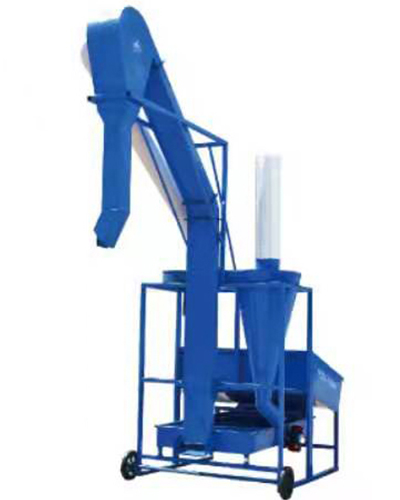
Delivery of the wind for raw material

Dmс-160 type pulsed jet cloth filter
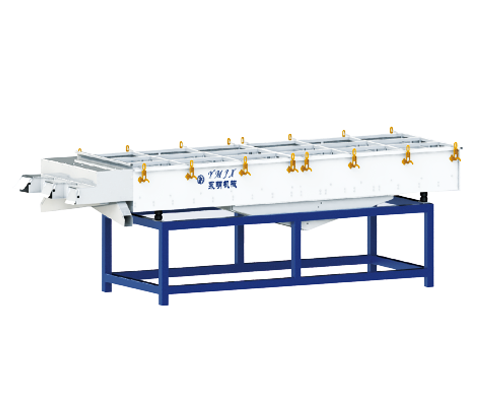
Grading screen
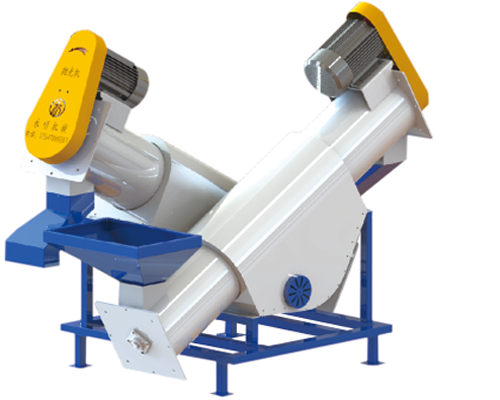
Polisher

De-stoner
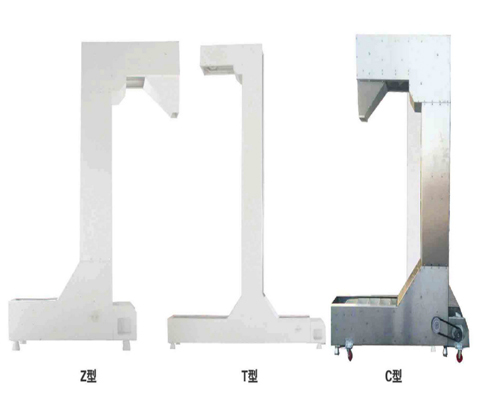
Unbroken elevator

KTF4-3000 Sunflower seed hulling & separating machine

Ident cylinder sunflower seed cleaning machine

Product introduction of cyclone dust separator
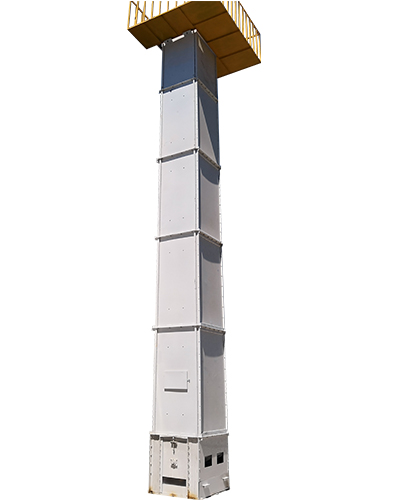
Vertical hoist
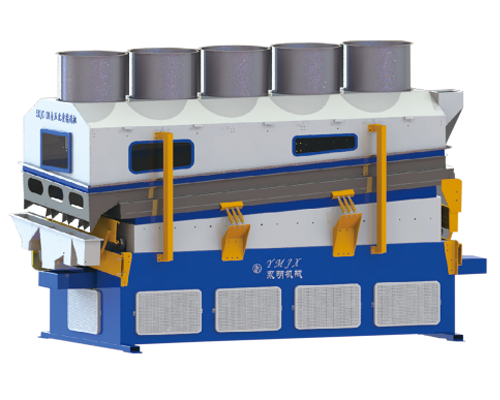
Gravity separator

5XF-2000 type compound screening machine

KTF3-1200 Sunflower seed hulling & separating machine

KTF4-2800型葵花脱壳分选机